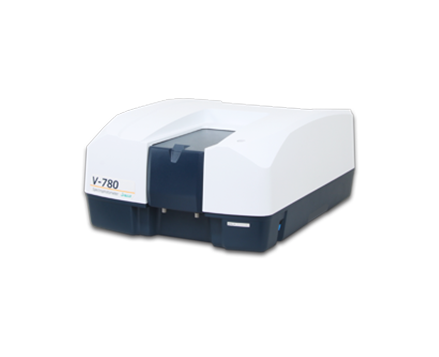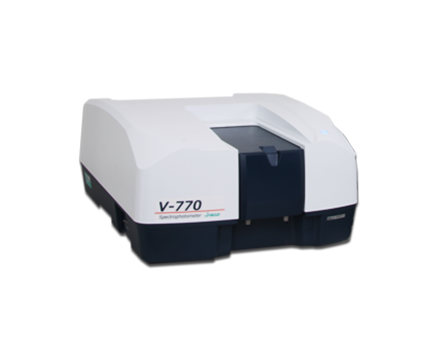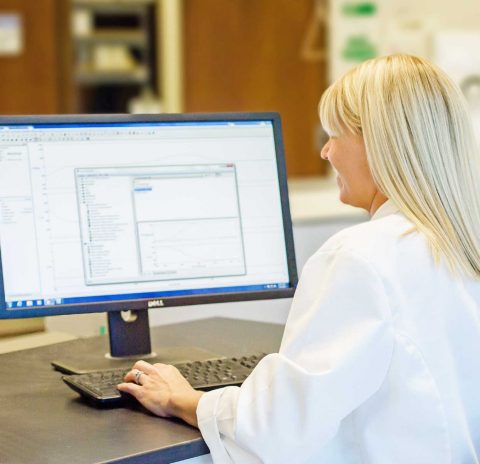Evaluation of Solar Cells using Absolute Reflectance with a UV-Visible/NIR Spectrophotometer
August 22, 2022
Introduction
Introduction
The ARMN-735 (UV-visible/NIR) accessory is an automated accessory for the asynchronous measurement of absolute reflectance. The accessory can accept a wide range of samples and provide absolute reflectance measurements in addition to transmission, diffuse transmission and diffuse reflectance measurements on a variety of samples. In this note, the ARMN-735 accessory was used with a V-670 UV-visible/NIR spectrophotometer for the measurement of reflectance of a commercial solar panel.
![]()
JASCO UV-670 UV-VIS Spectrophotometer
Solar panels (Figure 1) are designed to absorb as much light as possible over a wide range of angles of illumination from the sun (Figure 2). Conversely, the solar panel should reflect as little light as possible when examined in the reflectance (%R) mode. When examining the reflectance characteristics of a solar panel, a minimum reflectance value should be obtained at all source incidence values. A lack of reflectance indicates that the solar cell material is nearly completely absorbing the energy, which is the most desirable characteristic of a solar cell. It is necessary to be able to measure the reflectance of the solar panel material in wavelength mode (Figure 3) as well as in electron Volt mode (Figure 4) as the ideal operating range for doped Si solar cell material is in the range of 1-2 eV, the ideal band-gap range for these materials. The solar panel material in Figure 1 was placed in the ARMN-735 absolute reflectance accessory and a series of spectra measured in the spectral range 400-1250 nm were recorded at incidence angles of 5 to 75 degrees with synchronous detection (5 degree offset) used for each incidence angle setting. Figures 3 and 4 shows the reflectance results obtained from the commercial solar cell.




Conclusion
The absolute reflectance accessory can be used to examine the transmittance and/or reflectance of a wide variety of samples. For a commercial solar panel, the V-670 UV-visible/ NIR spectrophotometer was interfaced with an ARMN-735 accessory to examine the solar panel with synchronous detection using incidence angles ranging from 5 to 75 degrees.
Featured Products:
-
UV-Visible/NIR Spectra Manager™
-

A high sensitivity UV-Visible/NIR Spectrophotometer with InGaAs detector for wavelengths up to1600nm
V-780 UV-Visible/NIR Spectrophotometer
-

Wide range UV-Visible/Near Infrared Spectrophotometer with PbS detector for wavelengths up to 3200nm
V-770 UV-Visible/NIR Spectrophotometer

Evaluation of Solar Cells using Absolute Reflectance with a UV-Visible/NIR Spectrophotometer
Introduction
Introduction
The ARMN-735 (UV-visible/NIR) accessory is an automated accessory for the asynchronous measurement of absolute reflectance. The accessory can accept a wide range of samples and provide absolute reflectance measurements in addition to transmission, diffuse transmission and diffuse reflectance measurements on a variety of samples. In this note, the ARMN-735 accessory was used with a V-670 UV-visible/NIR spectrophotometer for the measurement of reflectance of a commercial solar panel.
![]()
JASCO UV-670 UV-VIS Spectrophotometer
Solar panels (Figure 1) are designed to absorb as much light as possible over a wide range of angles of illumination from the sun (Figure 2). Conversely, the solar panel should reflect as little light as possible when examined in the reflectance (%R) mode. When examining the reflectance characteristics of a solar panel, a minimum reflectance value should be obtained at all source incidence values. A lack of reflectance indicates that the solar cell material is nearly completely absorbing the energy, which is the most desirable characteristic of a solar cell. It is necessary to be able to measure the reflectance of the solar panel material in wavelength mode (Figure 3) as well as in electron Volt mode (Figure 4) as the ideal operating range for doped Si solar cell material is in the range of 1-2 eV, the ideal band-gap range for these materials. The solar panel material in Figure 1 was placed in the ARMN-735 absolute reflectance accessory and a series of spectra measured in the spectral range 400-1250 nm were recorded at incidence angles of 5 to 75 degrees with synchronous detection (5 degree offset) used for each incidence angle setting. Figures 3 and 4 shows the reflectance results obtained from the commercial solar cell.




Conclusion
The absolute reflectance accessory can be used to examine the transmittance and/or reflectance of a wide variety of samples. For a commercial solar panel, the V-670 UV-visible/ NIR spectrophotometer was interfaced with an ARMN-735 accessory to examine the solar panel with synchronous detection using incidence angles ranging from 5 to 75 degrees.

 Download This Application
Download This Application
